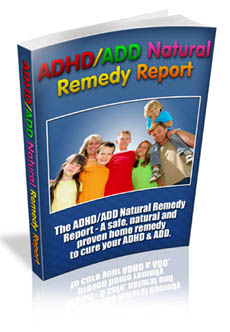How To Be Diagnosed With ADD
There are different theories about the causes of ADHD/ ADD. Some who study the condition have recently claimed that it is simply a normal difference among individuals and may have conferred an evolutionary advantage on individuals who needed to be very active and reactive in their environments. Obviously, being in a classroom where you need to sit at a desk, focus on the teacher, take in everything she is saying, and think about it can be a difficult task if you are a person who notices everything and wants to get up every few minutes and walk around and discover things.
Since many more boys are diagnosed with ADHD than girls, this difference has been attributed to our long evolutionary history, that is, men were expected to go out and hunt in a dangerous environment to provide the daily food for the family. In today's industrialized society, there is less and less emphasis on outdoor activities and higher expectations for sitting and focusing and paying attention in a classroom or office. Even recreation or playtime seems to be more passive now - sitting in front of a computer screen and playing video games, for example. Clearly, cultural expectations and opportunities need to be taken into account in the definition of ADHD. How To Be Diagnosed With ADD
As we will discuss more fully later, one of the goals of this blog is to help children deal flexibly and appropriately with the demands of different environments, such as being very active and alert to all signals but organize, during sports, dance, or wilderness camping, and more narrowly focused and still when listening to a teacher give a lecture or instructions.
There are also strong views among many that the causes of ADHD involve specific biological pathways. Neuroscience research currently suggests that the frontal lobes of the brain are involved in ADHD - particularly the prefrontal cortex - and that fundamental difficulties in many of the executive functions (for example, sequencing and planning) are, in a sense, "housed" in the prefrontal cortex and the frontal lobes. Other researchers suggest the cerebellum is involved as well. Such research is ongoing.
Whatever direction it takes, children with this diagnosis will benefit from a careful analysis of their particular profiles and attention to the strengths and weaknesses that underlie their hyperactivity or inattention.
A Comprehensive Approach
The program that we are going to describe for ADHD and ADD and all other kinds of attention problems, including ones that may not even fit the full criteria for ADHD or ADD, will focus on strengthening each of the separate abilities that support attention, focus, and concentration. This approach doesn't require medication.
There is a subgroup of children and adults who benefit from medication, but there is much that can be done before medication is considered. I always do a six- to twelve-month trial of a comprehensive approach in my practice before considering a referral to a psychopharmacology expert for a medication consultation, and I would suggest that this trial is the most important first step. It doesn't rule out the use of medication, but by implementing a comprehensive approach to ADHD and ADD, it becomes clear that there are a lot of children who don't require a "pill" at all. If medication is indicated at some point as part of our comprehensive approach, it's likely to be a lesser dose and of a lesser duration. If we are able to strengthen some of the abilities related to attention but the child still has some difficulties, then medication at a lesser dose and for a shorter period of time may prove helpful until these other abilities become strong enough for the child to maintain full focus and attention.
One of my concerns regarding the use of medication, in addition to the well-known potential side effects, such as agitation, sleep problems, or weight gain, is that many children experience a constriction in their emotional range, in their perceptions. Their creativity or sense of humor may not be as great. Although they can focus more, the medication narrows their horizons. This isn't to say that some children won't still require medication - some will. However, as a general rule I recommend working on strengthening the underlying core issues for at least six to twelve months and seeing how much progress we make before considering medication. If we are beginning to make progress in the first six months in these core issues and we see a better ability to attend and focus, then we have a child whose development is proceeding in a healthier fashion.
Seven Key Goals
We will discuss each of the elements of a comprehensive intervention approach to ADD and ADHD in greater detail. Below is a brief overview. How To Be Diagnosed With ADD
1. Strengthening Motor Functioning.
Here we work on the child's fundamental ability to use his nervous system and control his body in a healthy, age-appropriate way. This would include balancing, coordination, movement, integrating left and right body parts, hand-eye coordination, fine and gross motor skills, and the like.
2. Helping the Child Plan and Sequence Actions and Thoughts.
As I mentioned earlier, almost all children with attention problems have difficulties in sequencing. It's hard for these children to play a treasure-hunt game with a series of dues or to negotiate an obstacle course that involves sequencing many motor actions in a row. Later, they may not be able to follow complex directions in writing an essay. What we call motor planning and sequencing, and sequencing in general, involves verbal sequencing, too, as well as responding to visual cues and visual sequencing.
3. Modulating a Child's Response to Sensations.
Many children with ADHD or ADD have challenges in the way they process sensations. Some are sensory craving, while others are sensory overreactive - at least in one or another modality - and are constantly distracted by the stimuli in their environment. Some children may be overreactive to the movement of their own bodies so that moving in space on a swing may overstimulate them, or they may require a lot of jumping, spinning, swinging, and dancing. So this goal involves working with children's unique profiles, helping them find adaptive ways to respond to sensation and stay calm and focused. To learn more, you can check out How To Be Diagnosed With ADD.


